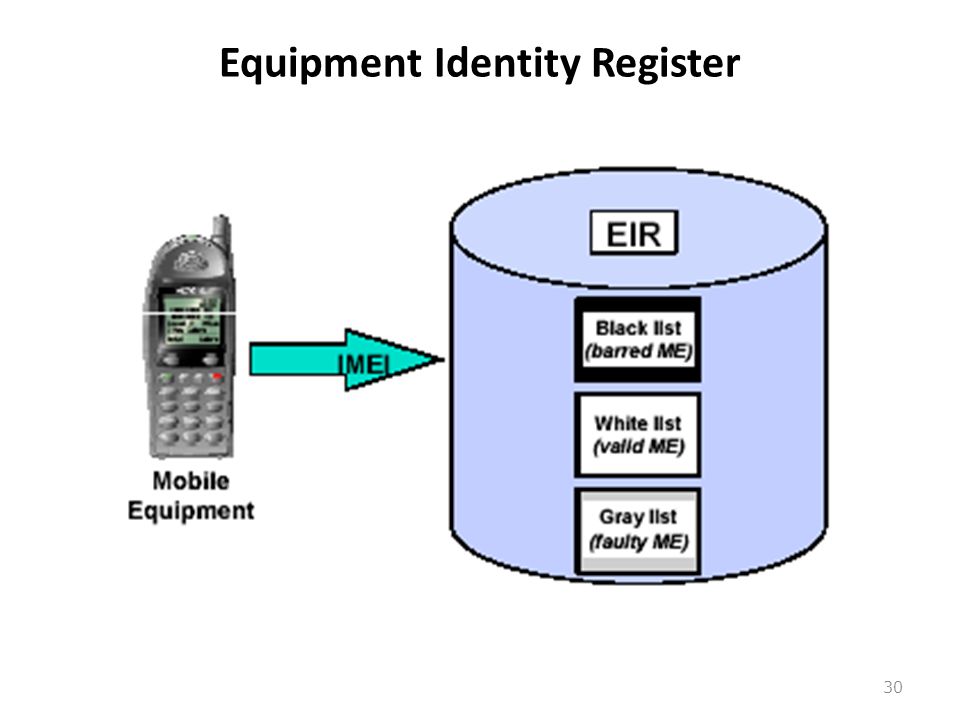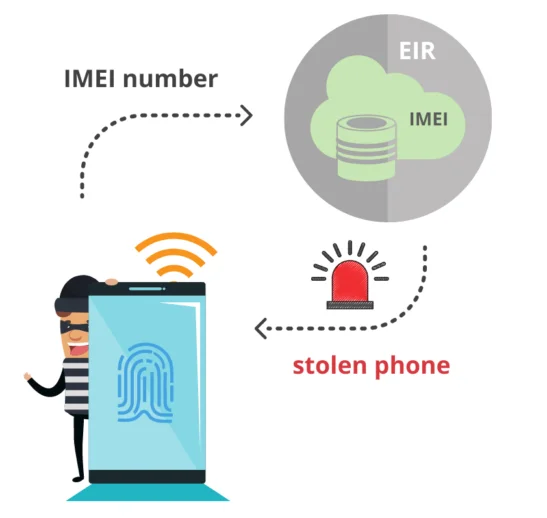
Equipment Identity Register

EIR - Connecting to the network.
image ©slideplayer.com
EIR - API Version.
image ©jtendo.comEach mobile network needs to keep lists of equipment that can and cannot connect to their network. This is to ensure the integrity of the network. The Equipment Identity Register (EIR) is part of the core of the network. It maintains lists of equipment that has tried to connect to a mobile phone network. Each device trying to connect to the network has a unique IMEI, which is a unique number allocated by manufacturer. This is used to Authenticate (or not) a device when it tries to connect. The register maintains 3 lists :
- White List - the first time a piece of (valid) equipment tries to connect to a mobile network it is put onto the White List. All future connection will check that the device is on this white list.
- Black List - this is the list of barred equipment; stolen or devices that when they are connected have had a negative effect on the network - they do not confirm to the network standards.
- Grey List - the list of equipment that is classed as non-conforming. They are not bared but do not conform in some way.
© mobilephonetechnology.co.uk all rights reserved 2017-2025
